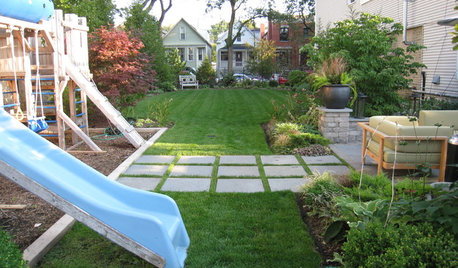When to sucker intermediates
Bob_Mc
11 years ago
Related Stories

KITCHEN APPLIANCESWhat to Consider When Adding a Range Hood
Get to know the types, styles and why you may want to skip a hood altogether
Full Story
SELLING YOUR HOUSE15 Questions to Ask When Interviewing a Real Estate Agent
Here’s what you should find out before selecting an agent to sell your home
Full Story
GARDENING GUIDESWhen and How to Plant a Tree, and Why You Should
Trees add beauty while benefiting the environment. Learn the right way to plant one
Full Story
KITCHEN DESIGN9 Questions to Ask When Planning a Kitchen Pantry
Avoid blunders and get the storage space and layout you need by asking these questions before you begin
Full Story
HOME OFFICESWhen Your Dining Table Is a Workspace
If you mix spreadsheets or homework with sandwiches and home fries, these tips are for you
Full Story
LIFE6 Tips for Teaching Your Kids to Be Good Neighbors
Everyone wins when your children learn to respect boundaries, get help when they need it and show others they care
Full Story
KITCHEN CABINETSLearn the Lingo of Kitchen Cabinet Door Styles
Understand door types, materials and cabinet face construction to make the right choice when you shop
Full Story
FURNITUREForever Furniture: A Buyer’s Guide to the Dining Table
There comes a time when a make-do piece of furniture won’t do. We give you a leg up on choosing the right table for you
Full Story
KITCHEN DESIGN8 Ways to Configure Your Kitchen Sink
One sink or two? Single bowl or double? Determine which setup works best for you
Full Story







carolyn137
digdirt2
Related Professionals
Reading Landscape Architects & Landscape Designers · Tempe Landscape Contractors · Belmont Landscape Contractors · Fort Wayne Landscape Contractors · Hoffman Estates Landscape Contractors · Las Vegas Landscape Contractors · Vashon Landscape Contractors · West Covina Landscape Contractors · Salem General Contractors · Dothan General Contractors · Genesee General Contractors · Fredonia Decks, Patios & Outdoor Enclosures · Port Saint Lucie Decks, Patios & Outdoor Enclosures · Redlands Decks, Patios & Outdoor Enclosures · Vandalia Decks, Patios & Outdoor EnclosuresBob_McOriginal Author
MaryMcP Zone 8b - Phx AZ
bigpinks
captbobs763
missingtheobvious
carolyn137
digdirt2
bigpinks
digdirt2
number2
qaguy
ryseryse_2004
athey
missingtheobvious
carolyn137
rt_peasant
gumby_ct
athey
carolyn137